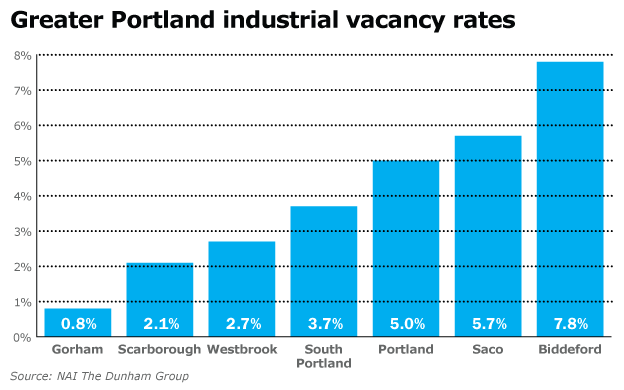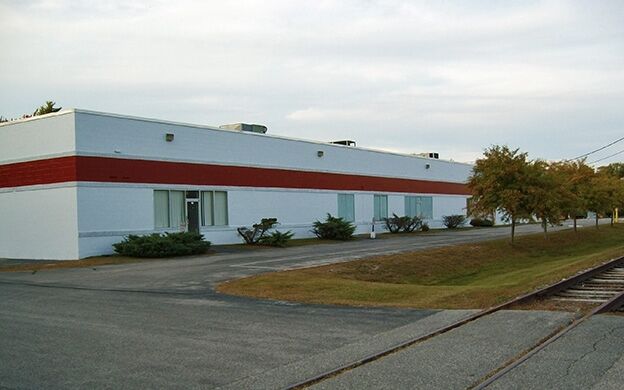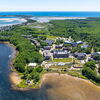Lack of new construction leads to industrial real estate crunch in southern Maine
Vacancy rates in greater Portland’s industrial real estate market have been dropping every quarter for more than five years, leading to what one broker calls a critical space crunch for businesses looking to expand or relocate.
NAI The Dunham Group, a commercial real estate brokerage firm located in Portland, has been tracking the vacancy and lease rates of industrial buildings in the greater Portland area since 2010, when the rate was between 8 and 9%, said Justin Lamontagne, a broker with the firm.
Now, the rate is about 4% — historically low for this market, he said
The reason for the low vacancy rate, Lamontagne said, is there’s been little added inventory of industrial building in the area, while the economy has improved. Companies are reinvesting in their businesses, he said, which often leads to real estate investments.
“But there’s been very little new construction,” Lamontagne said. “So it’s a matter of absorption. They’ve absorbed existing space. The message now is, we need more inventory.”
As a member of the Maine Real Estate & Development Association, and sensing a trend but lacking hard data, Lamontagne said he decided in 2010 to inventory every industrial building in the greater Portland region. He presented an overview of southern Maine’s industrial real estate market at MEREDA’s 2015 Annual Forecast Conference in January
According to a December 2014 survey by the firm, there are 556 industrial buildings with just under 18 million square feet of space in Portland, South Portland, Westbrook, Scarborough, Gorham, Saco and Biddeford. Industrial buildings include warehouses and distribution and manufacturing plants. In Maine’s rural areas, there doesn’t appear to be the same space crunch for industrial buildings, he said.
The solution to the space, Lamontagne said, is new construction, but most of his clients prefer to buy an existing building because it’s far more affordable than building new.
Earlier this year, Lamontagne helped broker a deal to move Cape Seafood, a seafood processor owned by Luke's Lobster founder Luke Holden, into 25,000 square feet of space of a 44,000-square-foot food processing facility on Industrial Park Road in Saco.
“I have clients who have made it through the recession and are now looking to expand, debating between adding to an existing building or moving to a different location,” he said. “Lack of inventory has proven quite challenging for a lot of my clients, because if they want something, it’s not necessarily available right now.”
He advises companies to plan expansions or relocation further out in the future. It used to take him two to three months to find a location for a company. Now, it takes six months to a year.
“Companies need to plan,” Lamontagne said, “in terms of time, and also have some level of flexibility in their current location.”
Read more
Portland real estate still hot, so where's the best place in Maine to get a home loan?












Comments